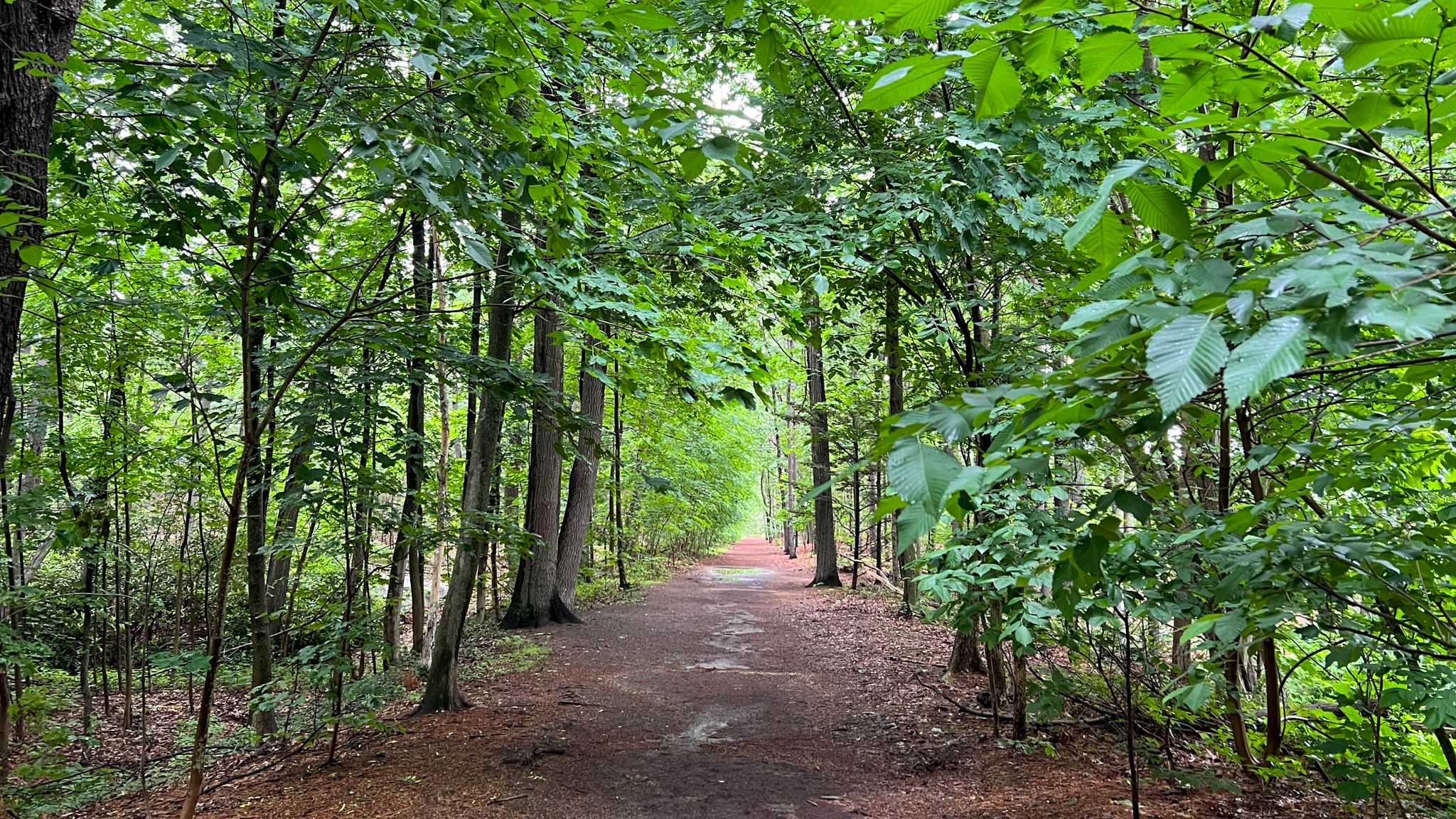The following letter to the editor was submitted by Andover Selectman Chris Huntress (photo, middle). The views expressed are solely those of the author and do not necessarily reflect the views of Andover News. You can learn more about our policy on opinion and commentary on our Mission and Policies page.
The Town of Andover has proposed to pave an 8′ wide pedestrian walkway through the 1.2-mile trail on town-owned land at Haggett’s Pond. Full disclosure: I am a member of the Andover Select Board, but I share my thoughts as a resident. I understand the concerns about pavement versus stone dust for the trail surface.
The Haggett’s Pond Rail Trail project will require compliance with the Massachusetts Architectural Access Board and the Americans with Disabilities Act (ADA). Haggett’s Pond is the best location for an ADA-accessible trail because it already has a flat, compact rail bed. Areas such as Fish Brook Reservation and Pomp’s Pond would require hillside excavation and more extensive tree removal.
There are good and thoughtful comments on both sides of this discussion. There will be environmental impacts. On the other hand, paving provides a stable surface and reduces the risk of shifting and movement, a major concern for residents with mobility issues. The current design has minimized the amount of tree clearing, and we can work to further reduce the impact of the trail and proposed parking areas. As a community, we must weigh the pros and cons of what is best for all residents, not just those who are able-bodied. Providing universal access to Haggett’s Pond is the right thing to do.
I support the position of the Andover Commission on Disability, the Building Inspector, and the ADA Coordinators. Paving the 1.2-mile trail at Haggett’s Pond will provide universal access for all users.
Christian Huntress
Andover
Andover News accepts and encourage reader submissions, including letters to the editor and opinion columns. Submissions should be 750 words long or fewer and Andover-focused. Please include your name, title if applicable to your topic and connection or interest in Andover. We also need a phone number so we can confirm authorship. Send us your prose!


Response to Chris huntress
Chris- the following is a FB post that perhaps you can respond to: “there are no grading issues at Pomp’s. The Town keeps stating that but it isn’t true. The main trail has less than 6’ elevation gain over 1/2 mile. ADA standards call for no more than an 8.33% grade. Not one part of that trail would be an issue.
There’s only one small section of wetlands and it’s wide and flat.
Oh and it’s not our water supply or a MA Heritage Priority Habitat and it would be less expensive”.
In addition, access is from the paved road behind the ballardvale dam.
The trail includes a town Sewer main run with its slight elevation along the route.
Please ask the facility department to post their analysis of all the alternate trails in their ADA assessment. This is about wetland and environmental impact- hardly the wheelhouse of the janitorial department.
As an architect, you know Talk is cheap-data driven facts is what we need.
Thanks
The assumption of a ‘stable’ surface with asphalt walkway paving is unwise and at odds with reality. Take a look at the asphalt walkway along the Town Common at Whittier St. (easy to look at with Google Maps Street View – 28 or 34 Whittier) and look at the cracked and broken asphalt. It’s not an isolated issue, it’s typical with asphalt walkways by trees. In the immediate area look at Chestnut St (ex. 56 Chestnut) or Bartlett (25-34) or Morton St. (64-68) for increasingly worse conditions. Andover has real experience with asphalt paths in proximity to trees, and it does not bode well for mobility impaired folks. Haggett’s Pond Rail Trail is chock full of large exposed tree roots that crisscross the trail surface. Using asphalt to pave over those roots is at best a very high maintenance approach that will degrade over time as sections of it become cracked, broken and inaccessible to mobility impaired folks – just as our existing asphalt walkways are today. Let’s summarize: unstable surface, environmental risks, degradation of the nature trail experience … how is this the preferred option? Now is the time to rethink this and actually consider either more suitable materials or a more suitable location if the Town insists on asphalt. Mobility impaired people deserve a better approach to an ADA compliant trail.